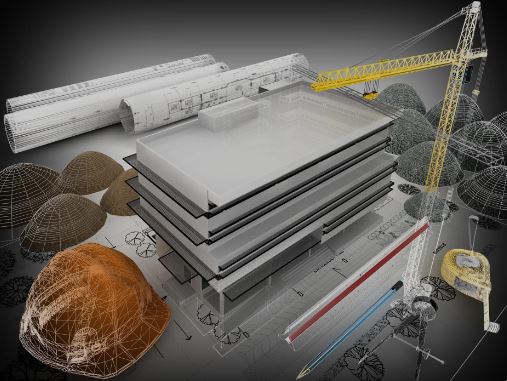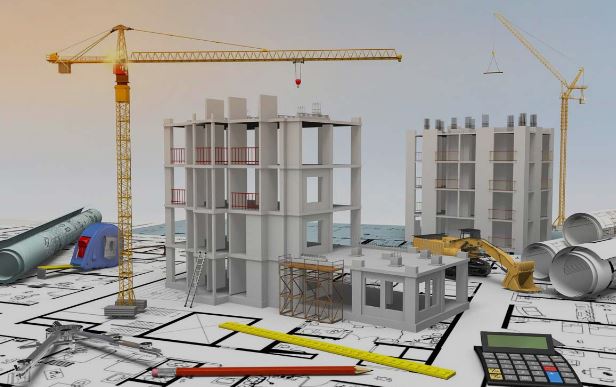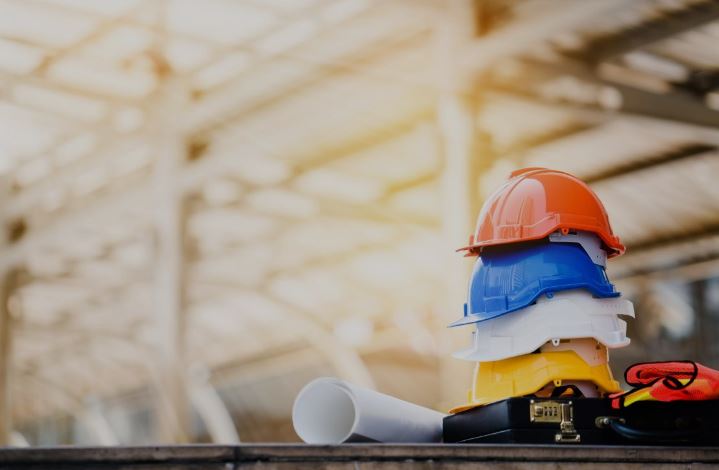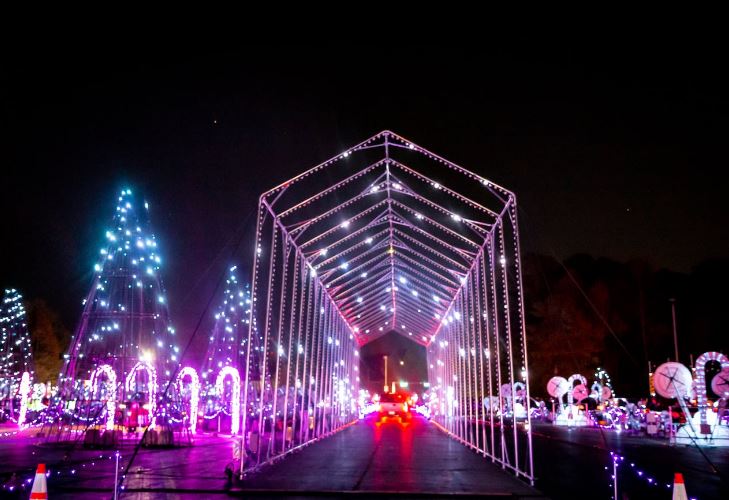Exploring Innovative Materials in Structural Engineering and Design
Structural engineering and design have come a long way in the past few decades. New materials and technologies are constantly being developed, making it possible to build structures that were previously impossible or impractical. These innovative materials not only offer greater flexibility in design but also provide enhanced performance and durability. From high-performance concrete and fiber-reinforced polymers to self-healing materials and shape-memory alloys, this post will explore some of the most exciting new materials in structural engineering and design. Join us on a fascinating journey as we break ground and explore the cutting-edge materials that are shaping the future of construction.
1. Introduction to Innovative Materials in Structural Engineering The field of structural engineering and design is constantly evolving, with new materials and technologies pushing the boundaries of what is possible in construction. Innovative materials play a crucial role in shaping the future of buildings and infrastructure, offering solutions that are not only more sustainable and efficient but also visually striking and unique.
From cutting-edge composites to advanced polymers and sustainable alternatives like bamboo and recycled plastics, the world of structural engineering is ripe with possibilities. These innovative materials are not only changing the way we build, but also challenging traditional notions of strength, durability, and aesthetics.
In this blog post series, we will delve into the fascinating world of innovative materials in structural engineering, exploring their characteristics, applications, and the impact they are having on the industry. Join us on this journey as we uncover the exciting potential of these materials and their role in shaping the buildings and infrastructure of tomorrow.
2. The Role of Materials in Building Design and Construction Materials play a crucial role in shaping the future of structural engineering and design. The choice of materials can significantly impact the durability, sustainability, and aesthetics of a building. Engineers and designers are constantly exploring innovative materials to push the boundaries of what is possible in construction.
From traditional materials like concrete and steel to cutting-edge options such as carbon fiber composites and self-healing concrete, the range of materials available for building design is vast and ever-expanding. Each material comes with its own unique properties and challenges, influencing the structural integrity and performance of the building.
Innovations in materials science are enabling architects and engineers to create structures that are not only visually striking but also environmentally friendly and cost-effective. By understanding the characteristics of different materials and their potential applications, professionals in the field can revolutionize the way buildings are designed, constructed, and maintained.
The role of materials in building design and construction is evolving rapidly, driven by a growing emphasis on sustainability, efficiency, and resilience. As the industry continues to embrace new technologies and materials, we can expect to see groundbreaking innovations that redefine the possibilities of structural engineering and design.
3. Emerging Trends in Structural Engineering Materials
The field of structural engineering is constantly evolving, with new materials and technologies pushing the boundaries of what is possible in design and construction. As we look towards the future, it is crucial to stay informed about the latest trends and innovations in structural engineering materials.
One of the emerging trends in structural engineering materials is the use of carbon fiber composites. These lightweight and high-strength materials offer significant advantages over traditional materials like steel and concrete. Carbon fiber composites are not only lighter and more durable but also have excellent corrosion resistance, making them ideal for a wide range of applications in structural engineering.
Another exciting trend is the development of smart materials that can adapt to changing environmental conditions. These materials have the ability to respond to external stimuli such as temperature, humidity, or stress, allowing for dynamic and responsive structures. By incorporating smart materials into structural design, engineers can create buildings and infrastructure that are more resilient and efficient.
Innovations in sustainable materials are also shaping the future of structural engineering. With a growing focus on environmental sustainability, engineers are exploring new materials that are renewable, recyclable, and low-impact. From bamboo and timber to recycled plastics and bio-based composites, sustainable materials offer a greener alternative for the construction industry.
By staying abreast of these emerging trends in structural engineering materials, engineers and designers can harness the power of innovation to create safer, more efficient, and environmentally friendly structures. Embracing new materials and technologies is key to breaking ground in the field of structural engineering and driving the industry forward into a more sustainable future.
4. Case Studies of Innovative Materials in Construction Projects
Case studies of innovative materials in construction projects provide valuable insights into the real-world application and impact of these materials. By examining successful projects that have utilized cutting-edge materials, engineers and designers can gain a deeper understanding of the potential benefits and challenges associated with their use.
One such case study is the use of carbon fiber reinforced polymer (CFRP) in the construction of bridges. CFRP offers high strength-to-weight ratio, corrosion resistance, and durability, making it an attractive alternative to traditional materials like steel and concrete. By analyzing the performance of bridges built with CFRP components, engineers can assess the structural integrity, longevity, and cost-effectiveness of this innovative material.
Another compelling case study is the incorporation of self-healing concrete in building construction. Self-healing concrete contains microcapsules of healing agents that can repair cracks and damages autonomously, prolonging the lifespan of structures and reducing maintenance costs. Studying the implementation of self-healing concrete in real projects provides valuable data on its effectiveness in enhancing structural durability and resilience.
Through in-depth case studies of innovative materials in construction projects, professionals in the field of structural engineering and design can gain inspiration, knowledge, and practical insights to push the boundaries of traditional construction methods and embrace the potential of new materials for sustainable and resilient infrastructure development.
5. Benefits and Challenges of Using Innovative Materials
Innovative materials in structural engineering and design present a myriad of benefits and challenges that push the boundaries of what is possible in construction. One of the key advantages of using innovative materials is their potential to enhance structural performance and efficiency. These materials often offer superior strength-to-weight ratios, allowing for lighter and more sustainable structures that require less material and energy to construct.
Additionally, innovative materials can enable architects and engineers to create unique and aesthetically pleasing designs that were previously unattainable with traditional materials. This opens up a world of creative possibilities and allows for the realization of groundbreaking architectural concepts.
However, along with these benefits come challenges that must be carefully navigated. One of the primary challenges of using innovative materials is their relative newness and limited availability compared to traditional building materials. This can lead to higher costs and longer lead times for sourcing and procurement, as well as potential compatibility issues with existing construction practices and regulations.
Furthermore, the long-term durability and performance of innovative materials may not be fully understood, requiring thorough testing and evaluation to ensure their reliability in real-world applications. Despite these challenges, the potential benefits of using innovative materials in structural engineering and design make them an exciting frontier worth exploring for those seeking to push the boundaries of construction innovation.
6. Sustainable Materials and Green Building Practices
Sustainable materials and green building practices are revolutionizing the field of structural engineering and design. As the world increasingly focuses on environmental conservation and reducing carbon footprints, the demand for eco-friendly construction materials has soared.
Innovative materials such as bamboo, recycled steel, reclaimed wood, and sustainable concrete are being embraced for their durability, versatility, and low environmental impact. These materials not only reduce the depletion of natural resources but also minimize waste and energy consumption during the construction process.
Green building practices, including passive design strategies, energy-efficient systems, and renewable energy sources, are being integrated into structural engineering projects to enhance sustainability. From green roofs that promote biodiversity and improve insulation to solar panels that harness clean energy, the possibilities for incorporating sustainable elements into design are endless.
By prioritizing sustainable materials and green building practices, structural engineers and designers are not only contributing to a healthier environment but also creating structures that are resilient, cost-effective, and aesthetically pleasing. Embracing innovation in materials and practices is key to shaping a sustainable future for the built environment.
7. Advances in Technology and Material Science
Technology and material science are continuously pushing the boundaries of what is possible in structural engineering and design. With the rapid advancements in these fields, engineers and designers now have access to innovative materials that offer superior strength, durability, and sustainability.
One of the key areas of innovation is the development of smart materials that can adapt to changing environmental conditions. These materials have the ability to self-heal, self-monitor, and even self-repair, making them ideal for applications in structural engineering where maintenance and longevity are critical.
Furthermore, the emergence of nanotechnology has opened up new possibilities for creating ultra-lightweight yet incredibly strong materials. These nanomaterials, such as carbon nanotubes and graphene, have the potential to revolutionize the construction industry by enabling the creation of structures that are both lightweight and incredibly resilient.
In addition to new materials, advances in technology such as 3D printing and robotic construction techniques are also shaping the future of structural engineering and design. These technologies allow for the rapid prototyping of complex structures and the creation of bespoke components that are tailored to specific project requirements.
Overall, the convergence of technology and material science is driving innovation in structural engineering and design, paving the way for the development of sustainable, efficient, and aesthetically pleasing structures that will shape the cities of tomorrow.
8. Collaborations between Engineers, Designers, and Material Scientists
In the dynamic field of structural engineering and design, collaborations between engineers, designers, and material scientists are crucial for pushing boundaries and exploring innovative materials. By bringing together expertise from these diverse disciplines, projects can benefit from a holistic approach that considers both the structural integrity and aesthetic appeal of the final design.
Engineers bring their technical knowledge and skills in analyzing and designing structures to ensure they meet safety and performance standards. Designers contribute their creativity and vision to shape the aesthetic aspects of the project, considering factors such as form, function, and user experience. Material scientists play a key role in researching and developing new materials that offer enhanced properties, durability, and sustainability.
When these professionals collaborate, they can leverage their unique perspectives and expertise to overcome challenges and create groundbreaking solutions. By fostering open communication and sharing insights, engineers, designers, and material scientists can work together to explore the potential of cutting-edge materials and technologies in structural engineering and design.
Ultimately, these collaborations not only lead to innovative projects but also pave the way for advancements in the field, driving progress and shaping the future of structural engineering and design.
9. Future Prospects and Trends in Structural Engineering Materials
The field of structural engineering and design is constantly evolving, with new materials and technologies reshaping the way we build our world. As we look towards the future, there are several key trends and prospects that are set to revolutionize the industry.
One exciting trend is the rise of sustainable and eco-friendly materials in structural engineering. With a growing emphasis on environmental conservation and reducing carbon footprints, engineers are turning to materials such as recycled steel, bamboo, and engineered wood to create structures that are both durable and environmentally friendly. These materials not only offer excellent structural properties but also help in reducing the overall impact on the environment.
Another promising prospect in structural engineering materials is the advancement of smart materials and technologies. These materials have the ability to respond to external stimuli such as temperature, pressure, or light, allowing for structures that can adapt and change based on their environment. Shape-memory alloys, self-healing concrete, and piezoelectric materials are just a few examples of smart materials that are poised to revolutionize the way we design and build structures.
Furthermore, the integration of digital technologies such as Building Information Modeling (BIM) and advanced simulation tools is expected to play a significant role in the future of structural engineering materials. These technologies enable engineers to visualize and analyze complex structures in a virtual environment, leading to more efficient designs and optimized material usage.
As we continue to push the boundaries of innovation in structural engineering and design, the future prospects and trends in materials are indeed promising. By embracing sustainable materials, exploring smart technologies, and leveraging digital tools, engineers can create structures that are not only safe and resilient but also environmentally conscious and adaptable to the changing needs of our society.
10. Conclusion: Embracing Innovation for Sustainable and Efficient Designs
In conclusion, embracing innovation in structural engineering and design is crucial for creating sustainable and efficient structures that meet the needs of the present without compromising the ability of future generations to meet their own needs. By exploring and implementing innovative materials, engineers and designers can push boundaries, break new ground, and revolutionize the way we build.
The use of cutting-edge materials such as carbon fiber composites, self-healing concrete, and bio-based materials not only enhances the structural performance of buildings and infrastructure but also reduces environmental impact and promotes a greener future. These materials offer a wide range of benefits, including increased strength-to-weight ratios, enhanced durability, improved resilience to extreme conditions, and lower maintenance requirements.
Furthermore, by embracing innovation, structural engineers and designers can unlock new possibilities in architectural aesthetics, structural form, and spatial design. The integration of advanced materials and technologies allows for the creation of iconic structures that are not only visually stunning but also highly functional and sustainable.
In a rapidly changing world facing challenges such as climate change, resource scarcity, and urbanization, it is more important than ever to embrace innovation in structural engineering and design. By pushing the boundaries of what is possible and challenging traditional norms, we can create a built environment that is resilient, sustainable, and future-proof. Let us continue to break ground, explore new materials, and shape a better world through innovative design and engineering practices.
In conclusion, we have delved into the fascinating world of innovative materials in structural engineering and design. From cutting-edge composites to sustainable alternatives, the possibilities are endless for revolutionizing the way we build structures. Embracing these new materials not only leads to more efficient and resilient designs but also contributes to a greener and more sustainable future. As we continue to push the boundaries of what is possible, we look forward to seeing the groundbreaking creations that emerge from the fusion of creativity and technology in the field of structural engineering.
Visit: https://gdiengdesign.com/gdiengdesign-structural/









